An updated state-by-state list of resources and contacts for teachers, students and researchers.
Also see National Energy Education Contacts.
This collection of state contacts offers education programs (designed for grades kindergarten through 12th grade) with emphasis on oil and natural gas exploration and production. This is an ongoing energy education research product – please contact AOGHS with your comments, suggestions, or additions.

A geological map of petroleum fields of the United States (exclusive of Alaska and Hawaii) by U.S. Geological Survey, which was founded in 1879.
Alabama
Hunt Oil Company drilled the A.R. Jackson Well No. 1 near Gilbertown in January 1944. The well found commercial quantities of oil at a depth of 2,580 feet. The State Oil and Gas Board of Alabama was formed the following year.
State Oil and Gas Board of Alabama
420 Hackberry Lane
P.O. Box 869999
Tuscaloosa, AL 35486-6999
(205) 349-2852
Alabama Department of Conservation and Natural Resources
64 N. Union Street
Montgomery, Alabama 36130
(334) 242-3486
Alabama Natural Gas Association
711 Nance Ford Road Southwest
Hartselle, AL 35640-3767
(256) 773-1891
ALASKA
Discovery of Alaska’s first commercial oilfield took place near Katella in 1902. The Trans-Alaska pipeline was completed in 1977.
Based in Anchorage, the Alaska Geological Society is a nonprofit organization of both professional geoscientists and general earth science enthusiasts. Its mission is to promote interest in, and understanding of, the geology of Alaska and to provide a forum and common organization for those interested in geology and related earth sciences.
Alaska Oil and Gas Association 121 W. Fireweed, Ste 207
121 W. Fireweed, Ste 207
Anchorage, AK 99503
(907) 272-1481
Fax: (907) 279-8114
The Alaska Oil and Gas Association, established in 1989, is a non-profit association whose 17 member companies represent the majority of oil and natural gas exploration, production, transportation, refining, and marketing activities in Alaska. AOGA supports energy education programs for Alaska students and teachers.
Alaska Oil & Gas Historical Society
406 W. Fireweed, Suite 200
Anchorage, AK 99503
“The Alaska Oil & Gas Historical Society (AKOGHS) is a non-profit organization dedicated to preserving and sharing the history of the oil and gas industry in Alaska. Our mission is to educate the public about the important role that oil and gas have played in shaping the state and its people and to preserve the legacy of those who have worked in the industry.”
Campbell Creek Science Center, “Get Energized” Program
Bureau of Land Management (BLM), Alaska
222 W 7th Avenue, #13
Anchorage Alaska 99513
(907) 271-5960
The Bureau of Land Management Anchorage Field Office’s Campbell Creek Science Center maintains a “Get Energized” website to foster greater understanding of energy and the importance of public lands to meeting the nation’s energy needs. The interactive program provides teachers (grades 5 -8) with a CD and content guide developed with science and social science activities.
ARIZONA
In 1902, Joseph Heslet drilled northern Arizona’s first oil well near Paulden oil seeps. Although it was a dry hole, prospectors and speculators swarmed in. By 1918, no commercial oil deposits were found, and the boom was over. Today, the state has one producing county.
Arizona Oil and Gas Conservation Commission
Arizona Geological Survey
416 W. Congress Street, Suite 100
Tucson, Arizona 85701-1381.
(520) 770-3500
ARKANSAS
The first Arkansas well to yield “sufficient quantities of oil” was the Hunter No. 1 drilled in Ouachita County in 1920, according to the Arkansas Geological Survey. The major oilfield discoveries that followed at El Dorado and Smackover launched the state’s petroleum industry.
 Arkansas Geological Survey
Arkansas Geological Survey
3815 West Roosevelt Road
Little Rock, Arkansas 72204
(501) 296-1877
The Arkansas Geological Survey (AGS), “collects and disperses geologic data to its users. This data consists of geologic maps, historical data concerning resources, various datasets, both paper and some electronic-based, concerning water, fossil fuel, and mineral resources of Arkansas. From 1920 to 2016, 1,889,239,718 barrels of oil have been produced in Arkansas. Annual production data for 2016, which is compiled from 356 fields in south Arkansas, is 5,470,499 barrels of oil and 7,831,679 MCF of gas.” Contact ags@arkansas.gov.
Arkansas Independent Producers and Royalty Owners
 1401 W. Capitol Ave., Suite 400
1401 W. Capitol Ave., Suite 400
Little Rock, AR 72201
(501) 975-0565
Founded in 2007, the Arkansas Independent Producers and Royalty Owners (AIPRO), “is the only nonprofit organization in Arkansas that serves as the unified voice for all segments of the state’s oil and natural gas industry in legislative and regulatory issues.”
AIPRO also is the parent organization of the Arkansas Energy Education Foundation and Arkansas Energy Rocks! program.
Arkansas Energy Education Foundation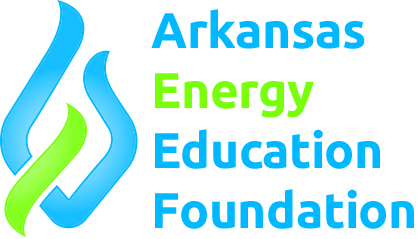
The Arkansas Energy Education Foundation is a 501(c)(3) nonprofit foundation the provides public education and outreach programs.
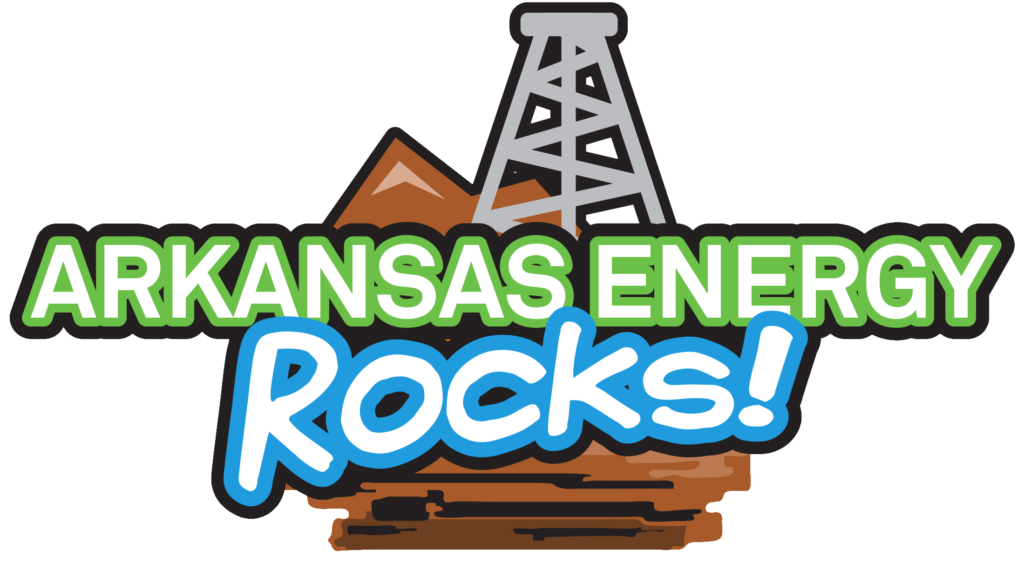 Arkansas Energy Rocks is an education outreach program providing oil and natural gas industry curricula for classrooms across the state.
Arkansas Energy Rocks is an education outreach program providing oil and natural gas industry curricula for classrooms across the state.
The energy education program offers lesson plans, activities, and experiments for students from elementary school through high school. Arkansas Energy Rocks! also can provide resources for civic groups and community presentations. Contact Director Paige Miller at pmiller@aipro.org
CALIFORNIA
In the early 1860s, Josiah Stanford dug about 30 tunnels into Sulphur Mountain near Santa Paula, slanting them upwards so oil would flow to the entrances. Stanford’s tunnels produced more oil in California than any other production method of the day.
California Department of Conservation
801 K Street, MS 24-01
Sacramento, CA 95814
(916) 322-1080
Fax: (916) 445-07320
“The Department of Conservation (DOC) administers a variety of programs vital to California’s public safety, environment and economy. The services DOC provides are designed to balance today’s needs with tomorrow’s obligations by fostering the wise use and conservation of energy, land and mineral resources.”
California Independent Petroleum Association
1112 ‘I’ Street, Suite 350
Sacramento, CA 95814
(916) 447-1177
Fax: (916) 447-1144
 The California Independent Petroleum Association (CIPA) is a nonprofit trade association representing more than 400 independent oil and natural gas producers, royalty owners, and service and supply companies operating in California. CIPA established a subsidiary organization, the California Natural Gas Producers Association in 2000. In addition, CIPA, in conjunction with the Western States Petroleum Association (WSPA), formed the California Resources Alliance, which provides industry exploration and production fact sheets.
The California Independent Petroleum Association (CIPA) is a nonprofit trade association representing more than 400 independent oil and natural gas producers, royalty owners, and service and supply companies operating in California. CIPA established a subsidiary organization, the California Natural Gas Producers Association in 2000. In addition, CIPA, in conjunction with the Western States Petroleum Association (WSPA), formed the California Resources Alliance, which provides industry exploration and production fact sheets.
Los Angeles Association of Professional Landmen
 The Los Angeles Association of Professional Landmen (LAAPL) was formed in 1957 by Los Angeles area land managers.
The Los Angeles Association of Professional Landmen (LAAPL) was formed in 1957 by Los Angeles area land managers.
LAAPL serves to further the education and broaden the scope of the petroleum landman and to promote effective communication between its members and government, community and industry on energy-related issues.
Among the purposes of the association, which is a member of the American Association of Professional Landmen established one year earlier, is to cultivate cordial relations among members through meetings and social and recreational events.
Speaker programs, seminars, and an annual West Coast Land Institute insured a high level of education available to professionals practicing in the region. LAAPL publishes “The Override,” a monthly newsletter.
Western States Petroleum Association – “Derricks to Desks”
1415 L Street, Suite 600
Sacramento, CA 95814
(916) 498-7750
Every summer since 1995, the Western States Petroleum Association (WSPA) and the San Joaquin chapter of the American Petroleum Institute (API) have sponsored “Derricks to Desks,” an outstanding three-day teacher seminar examining the California oil industry and providing curriculum resources and lesson plans.
Seminars typically include presentations from industry professionals on oilfield economics, careers, geology, refining, and the life cycle of an oil well. Most year’s program includes a fieldtrip to the Kern County Museum’s “Black Gold, the Oil Experience” exhibit and the West Kern County Oil Museum. WSPA is a nonprofit trade association representing about 30 major exploration, production, refining, transportation, and marketing companies in Arizona, California, Hawaii, Nevada, Oregon and Washington. Founded in 1907, WSPA is the oldest petroleum trade association in the United States.
COLORADO
On a coal lease near Florence in 1881, Alexander Cassidy drilled for water but hit oil instead at 1,445 feet. At the height of the boom, 25 oil companies and three refineries operated out of Florence.
Colorado Oil & Gas Association
1776 Lincoln St., Suite 1313
Denver, CO 80203
(303) 861-0362
Fax (303) 861-0373
A nonprofit trade association founded in 1984, the Colorado Oil & Gas Association promotes the beneficial, efficient, responsible and environmentally sound development, production and use of Colorado oil and natural gas.
In addition to public relations programs, including Colorado public radio programs, COGA works with the Colorado Geological Survey (CGS) on an earth science student/teacher education program, including distribution of “teacher packets” throughout Colorado. Four COGA chapters maintain a positive presence for the industry in local communities.
Colorado School of Mines – “Denver Earth Science Project”
Office of Special Programs & Continuing Education
Golden, CO 80401
(303) 273-3621
Fax: (303) 273-3314

The Denver Earth Science Project of the Colorado School of Mines (CSM) is an educational program with a balanced message of the inseparable interrelationship between energy, the economy and the environment. A teacher program (in partnership with federal agencies, school districts, and professional organizations) provides earth science curricula (grades 4-12).
The “Oil and Gas Exploration” module for grades 7-12 teaches students basic earth science concepts through the exploration of hydrocarbons. The hands-on student activities use real data from industry, and follow a problem-solving approach. In addition, the module integrates science, mathematics, geography, economics, and social studies into a high interest topic. Students learn about a relevant energy source through the teacher resource kit. The “Gushers ‘n’ Dusters” simulation game, also included in the resource kit, gives the students an opportunity to see the economics of the oil industry as banks, oil companies, and drilling companies negotiate and do business.
DESP modules served as the basis for the 1993 start of the Oklahoma Energy Resource Board education programs, which in turn inspired the “Petro Pro” programs of the Independent Petroleum Association of the Mountain States and many other state organizations.
Independent Petroleum Association of Mountain States
410 17th Street, Suite 1920
Denver, CO 80202
(303) 623-0987
Fax: (303) 893-0709
The Independent Petroleum Association of Mountain States (IPAMS) is a nonprofit trade association that represents independent natural gas and oil companies – the Rocky Mountain industry’s exploration and production segment. IPAMS is dedicated to representing, informing, educating and assisting its members, the public, and regulatory agencies on all issues affecting the industry.
FLORIDA
Florida’s first producing oil well came in on Sept. 26, 1943. Humble Oil Co. drilled to 11,626 feet with its Sunniland No. 1 well. The site is by the present day Big Cypress Preserve and a short drive from the resort city of Naples.
Florida Independent Petroleum Producers Association
P.O. Box 230
Pensacola, FL 32591-0230
(850) 434-6830
Fax: (850) 434-6842
The Florida Independent Petroleum Producers Association (FLIPPA) is a nonprofit association dedicated to serving Florida’s independent oil and gas exploration and production industry. Established in 1988, FLIPPA provides industry and legislative information and news to members, associated industry, and local, state and federal legislative groups.
ILLINOIS
In 1882, drillers found commercial quantities of natural gas at Litchfield in Montgomery County. Total output from the field by 1902 was only 6,576 barrels, but by 1940, Illinois Basin discoveries ranked Illinois fourth among oil producing states.
Illinois Oil and Gas Association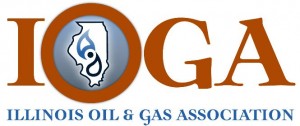 P.O. Box 788
P.O. Box 788
Mount Vernon, IL 62864-0016
(618) 242-2857
Fax: 618-242-3418
The Illinois Oil & Gas Association (IOGA) was organized in 1944 to provide an agency through which oil and gas producers, landowners, royalty owners, and others who may be directly or indirectly affected by or interested in oil and gas development and production in Illinois, may protect, preserve and advance their common interests. The organization is composed of 450 member companies.
Illinois Petroleum Resources Board
 P.O. Box 941
P.O. Box 941
Mt. Vernon, IL 62864
Telephone: (618) 242-2857
Fax: (618) 242-3418.
Established by the state in 1998, the Illinois Petroleum Resources Board (IPRB) promotes an understanding of oil and natural gas production business in Illinois through education – and public relations. IPRB encourages environmentally sound practices with respect to ongoing production and historical oilfield problems; and supports research related to production and remediation.
IPRB maintains a unique “rolling oil and gas education exhibit” available for school presentations. The IPRB Traveling Field Trip Exhibit is FREE to any school or special event in the State. The Exhibit features working models of crude oil and natural gas equipment, and graphical learning stations which students must “explore” to find energy information. Students learn how oil and gas are formed, where and how it is found, and how it is produced and refined. Presentations can be tailored to students of all ages, but our primary concentration is students beginning with the 4th grade through high school.
Independent Oil Producers Association Tri-State (IOPA Tri-State)
2104 Lincoln Ave.
Evansville, IN 47714
(812) 479-9451
Fax: (812) 476-2569
The Independent Oil Producers Association Tri-State (IOPA Tri-State) represents oil and gas producers in Indiana, Illinois and Western Kentucky.
INDIANA
South of Francesville, Granville Bates found natural gas while drilling for oil in 1867. His discovery prompted little excitement at the time, since the commercial potential of natural gas was years in the future.
Indiana Oil & Gas Association (IOGA)
1033 Mt. Pleasant Road, Suite H
Evansville, IN 47725
(814) 423-8061
Fax: (812) 424-5739
The Indiana Oil & Gas Association (IOGA) is a nonprofit trade association that acts as a liaison between the Indiana Division of Oil and Gas (state regulatory agency) and the oil and gas producers. IOGA also monitors legislative issues at the state level and works with the Indiana Department of Natural Resources and the Indiana Geological Survey, a research institute of Indiana University.
KANSAS
Norman No. 1 came in on Nov. 28, 1892 – the first oil well west of the Mississippi River to produce a commercial quantity. It was also the first well drilled in the vast Mid-Continent oilfield that covers parts of Kansas, Nebraska, Oklahoma, Arkansas, Louisiana, and Texas.
Eastern Kansas Oil and Gas Association
P.O. Box 355
Chanute, KS 66720
(620) 431-1020
Fax: (620) 431-9325
Kansas Independent Oil & Gas Association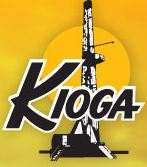 800 S.W. Jackson Street
800 S.W. Jackson Street
Topeka, KS 66612
The nonprofit trade association, the Kansas Independent Oil & Gas Association is a statewide association with over 1,400 members who are actively involved in the exploration, development, and production of crude oil and natural gas in Kansas and elsewhere. KIOGA is their advocate before the Kansas legislature, U.S. Congress, state and federal administrations — and the public.
Kansas Strong – The Kansas Oil & Gas Resources Fund
P.O. Box 757
Wichita, KS 67201-0757
(316) 771-7167
The Kansas Oil & Gas Resources Fund, established in 2006 by the Kansas Petroleum Education & Marketing Act, made Kansas the fourth state with a “check-off program” where oil and natural gas producers voluntarily contribute funds to a program designed to educate the public. It is similar to ones established in Oklahoma, Ohio, and Illinois.
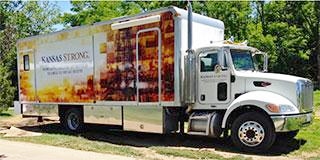
Kansas Strong Mobile Energy Education has been on wheels since 2014 visiting schools and events.
Kansas Strong offers K-12 programs and tools free to any educator completing a Kansas Strong Energy Education Workshop. Programs include “Little Bits,” a six-week curriculum for students in grades kindergarten through second to learn basic concepts about well safety, rock formations and petroleum products.
“Fossils to Fuel I & II,” are six-week elementary school curriculums (grades 3-6) for learning basic concepts about how energy is transformed from the sun to carbon-based matter. “Petro Active” (grades 6-9) uses classroom experiments to teach about the formation and recovery of oil and natural gas. “CORE Energy,” designed for students in grades ninth through 12, includes hands-on science, math, social studies and language arts activities.
Southwest Kansas Royalty Owners Association
209 East 6th, Box 250
Hugoton, KS 67951
(620) 544-4333
Fax: (620)544-2230
Founded in 1948, SWKROA has grown in membership to a present membership of over 2,600 members. Members of the association are owners of mineral interests and of royalty payable to them as oil and gas lessors. The association’s mission is to foster, protect and further in all respects the rights and interests of the mineral owner.
KENTUCKY
Boring for brine on the Stockton farm near Burkesville in March 1829, drillers hit a gusher. Known as the “Old American Well” or the “Great American Well,” oil from this well was sold as patent medicine decades before kerosene distillation created the petroleum industry.
Even earlier, oil was found on the Beatty farm, McCreary County, in the winter of 1918-1919. In Wayne County a local newspaper recorded an 1815 well that was abandoned — because oil ruined it as a source of brine. Learn more Kentucky oil and natural gas history courtesy of Brandon Nuttall and the Kentucky Geological Survey.
Kentucky Oil & Gas Association #1-A Physicians Park
#1-A Physicians Park
Frankfort, KY 40601
(502) 226-1955
Fax: (502) 226-3626
The Kentucky Oil & Gas Association (KOGA) is a nonprofit trade association formed in 1929 to protect and advance the interest of the oil and natural gas industry in Kentucky – and to oppose unfair and unjust legislation that may adversely affect the industry while disseminating reliable information. KOGA Online offers current information on matters pertaining to the industry in Kentucky.
LOUISIANA
In September 1901, Louisiana’s oil and natural gas industry began when the Heywood well came in near the communities of Evangeline and Jennings.
Center for Energy Studies
Louisiana State University
Energy, Coast and Environment Building
Nicholson Drive Extension
Baton Rouge, Louisiana 70803.
Phone: 225-578-4400.
The Center for Energy Studies provides energy information and analysis that responds to the needs of the legislature, public agencies, and business and civic groups. The center maintains some unique energy data bases and is the official repository of energy information from the state and The Energy Council. Staff respond regularly to requests from a wide variety of individuals and institutions for specialized energy data and information.
Louisiana Mid-Continent Oil & Gas Association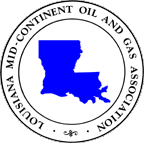 801 North Blvd.
801 North Blvd.
Baton Rouge, LA 70802
(225) 387-3205
Fax: (225) 344-5502
The Louisiana Mid-Continent Oil & Gas Association (LMOGA) represents all sectors of the oil and gas industry in Louisiana and the Gulf of Mexico. LMOGA is dedicated to the advancement of the state’s petroleum industry through legislative and regulatory means. Website includes many reference links and historical highlights for the state’s exploration: “A Remarkable Past, an Exciting Future.”
Louisiana Oil & Gas Association
P.O. Box 4069
Baton Rouge LA 70821-4069
Toll Free: (800) 443-1433
(225) 388-9525
Fax: (225) 388-9561
The Louisiana Oil & Gas Association (LOGA) – before 2006 known as LIOGA – was organized in 1992 to represent the independent and service sectors of the oil and gas industry in Louisiana, including exploration, production and oilfield services. LOGA is a nonprofit trade association whose mission is to provide industry with a working environment that will enhance business while educating the public and government of the importance of the oil and gas industry in the state.
MISSISSIPPI
Near Tinsley and Yazoo City, Union Producing Co. brought in the No. 1 Woodruff well at 5,500 feet in September of 1939. Within 15 months, there were 133 producing wells. The Tinsley field has yielded more than 230 million barrels of oil.
Mississippi Independent Producers & Royalty Owners
P. O. Box 13393
Jackson, MS 39236
(601) 362-0502
Fax: (601) 362-5397
Founded and organized in August 1989, the Mississippi Independent Producers & Royalty Owners (MIPRO) defends the interests of the independent producer and royalty owner segment of the Mississippi oil and gas industry. MIPRO members recognize the need for a voice in legislative and regulatory issues affecting their segment of the oil and gas industry. The MIPRO websites includes an historical timeline and resource links.
MICHIGAN
In 1860, Michigan State Geologist Alexander Winchell reported that oil and natural gas deposits lay under Michigan’s surface. First commercial production began in 1886 near Port Huron. In 1928, Mt. Pleasant’s oilfield made it the “Oil Capital of Michigan.”
Michigan Oil and Gas Association
124 West Allegan Street, Suite 1610
Lansing, MI 48933
(517) 487-1092
Organized in 1934, the Michigan Oil and Gas Association (MOGA) represents companies involved in exploration, drilling, production, transportation, processing and storage of crude oil and natural gas in Michigan. MOGA, a nonprofit membership association, has more than 1,000 members that include independent oil and gas companies, major oil companies, and the exploration arms of utility companies.
In 1976, Michigan became the first state to establish a land trust fund specifically subsidized by revenues generated from the oil and gas industry. The Michigan Natural Resources Trust Fund is a sway for every Michigan resident and visitor to benefit from an active oil and gas industry. Since its inception, the Fund has financed nearly 1,200 recreational projects throughout the state.
Michigan Oil & Gas Producers Education Foundation
124 West Allegan St.
Suite 1610
Lansing, MI 48933
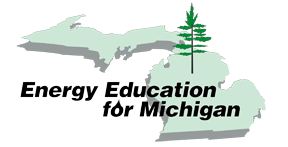 Michigan’s first recorded oil field was discovered In 1886. The Port Huron Field in St. Clair County produced from the Dundee formation at about 575 feet, notes the Michigan Oil & Gas Producers Education Foundation, which supports a variety of energy education programs. “Our mission is to provide facts about the Michigan oil and gas industry to the public and to provide financial support for programs that will inform the people of Michigan about the importance of our local oil and natural gas industry and about the environmental safeguards that we employ.”
Michigan’s first recorded oil field was discovered In 1886. The Port Huron Field in St. Clair County produced from the Dundee formation at about 575 feet, notes the Michigan Oil & Gas Producers Education Foundation, which supports a variety of energy education programs. “Our mission is to provide facts about the Michigan oil and gas industry to the public and to provide financial support for programs that will inform the people of Michigan about the importance of our local oil and natural gas industry and about the environmental safeguards that we employ.”
Created in 2009, Energy Education for Michiagan, Inc., is a 501(c)3 tax exempt charitable organization for encouraging and facilitating educational programs in Michigan relating to energy and sources of energy; educating and promoting energy safety to the general public; encouraging the wise and efficient use of energy; and supporting research and educational activities concerning energy, including seminars, teacher workshops and scholarships.
MISSOURI
Oil and natural gas were discovered in Missouri soon after the Civil War. By the early 1930s, more than 2,500 wells had been drilled.
Missouri Department of Natural Resources
State Oil and Gas Council
P.O. Box 176, Jefferson City, MO 65102
800-361-4827
MONTANA
Montana’s first substantial oil production began in 1915 from wells drilled in the northern Elk Basin, southeast of Belfry. Over the next 40 years, more oilfields were developed in the Williston Basin, Sweetgrass Arch, Big Snowy Uplift, Powder River Basin, and northern extensions of the Big Horn Basin.
Montana Petroleum Association Inc.
25 Neill Avenue
Helena, MT 59601
(406) 442-7582
The Montana Petroleum Association Inc. (MPA) is a voluntary, nonprofit trade association whose members include oil and natural gas producers, gathering and pipeline companies, petroleum refineries and service providers and consultants. MPA’s government affairs program strives to maintain a positive business climate for the petroleum industry in Montana, and its education program fosters public awareness of the industry’s contributions to the state and nation.
Northern Montana Independent Oil and Gas Association
P.O. Box 488
Cut Bank, MT 59427
(406) 873-9000
Fax: (406) 873-5207
NEW MEXICO
Twenty miles west of Farmington, Midwest Refining brought in New Mexico’s first commercially successful oil well in September 1922.
The New Mexico Energy, Minerals and Natural Resources Department
1220 South St. Francis Drive
Santa Fe, NM 87505
The New Mexico Energy, Minerals and Natural Resources Department is a cabinet department of the governor of New Mexico.
Independent Petroleum Association of New Mexico
P.O. Box 1836
Roswell, NM 88202
(505) 622-2566
 Formed in 1978, the Independent Petroleum Association of New Mexico (IPANM) is an organization that represents nearly 400 oil and gas producers and royalty owners on a variety of concerns, primarily dealing with state and federal issues. IPANM has put together a comprehensive oil and gas facts book. The IPANM energy education booklet covers everything from how important oil is to the modern world, to New Mexico’s significant contribution to the nation’s energy needs, to how the industry works to protect soil, groundwater and wildlife.
Formed in 1978, the Independent Petroleum Association of New Mexico (IPANM) is an organization that represents nearly 400 oil and gas producers and royalty owners on a variety of concerns, primarily dealing with state and federal issues. IPANM has put together a comprehensive oil and gas facts book. The IPANM energy education booklet covers everything from how important oil is to the modern world, to New Mexico’s significant contribution to the nation’s energy needs, to how the industry works to protect soil, groundwater and wildlife.
New Mexico Oil & Gas Association
203 E Santa Fe Avenue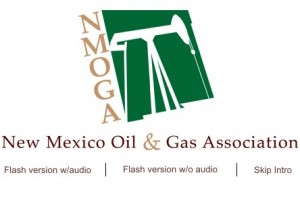 Santa Fe, NM 87505
Santa Fe, NM 87505
(505) 982-2568
New Mexico Oil & Gas Association NMOGA education programs provide teachers and students with tools to understand New Mexico’s natural energy resources. NMOGA, a nonprofit trade association, provides activity books, lesson plans, curriculum guides and posters to schools statewide.
NMOGA helps educate students on the development and use of fossil fuels, energy conservation, safety, and the importance of the New Mexico industry. NMOGA’s annual oil and gas challenge offers students an opportunity to show off how much they have learned. Winners are recognized at NMOGA’s annual conference and presented with an award during the state’s legislative session.
NEW YORK
In November 1865, Job Moses and his Hall Farm Petroleum Co. found oil in Carrollton Township, Cattaraugus County. The Moses No. 1 well was drilled to 1,165 feet. Initial production was seven barrels per day, but the well was on the edge of what would become the giant Bradford oilfield.
Independent Oil & Gas Association of New York
5743 Walden Drive
Lakeview NY 14085
(716) 627.4250
The Independent Oil & Gas Association of New York (IOGA of NY) is a non-profit trade association formed in 1980 to protect, promote, foster and advance the common interests of oil and gas producers and related industries, including contractors, allied service industries and professionals serving the oil and gas industry in the Empire State. IOGA of NY organizes workshops, seminars, and technical meetings to provide educational opportunities and promote technology transfer within the industry.
New York State Geological Survey
Office of the State Geologist
3000 Cultural Education Center
Albany, NY 12230
The mission of the New York State Geological Survey is to make services available to all agencies and people of New York; conduct geological research; and cooperate with agencies of other states, federal government, educational institutions, and industry in the discovery, analysis, and dissemination of geologic information.
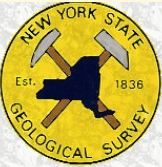 NYSGS provides free educational leaflets for students and teachers in K-12. It conducts workshops and classes in geological sciences through the New York State Museum in Albany. Also see this unofficial gateway to a history of the survey.
NYSGS provides free educational leaflets for students and teachers in K-12. It conducts workshops and classes in geological sciences through the New York State Museum in Albany. Also see this unofficial gateway to a history of the survey.
New York State Energy Research and Development Authority
17 Columbia Circle
Albany, NY 12203-6399
(518) 862-1090, ext. 3303 or
1-866-NYSERDA ext. 3303
New York State Energy Research and Development (NYSERDA) maintains a “Energy Smart Students Program” in partnership with the National Energy Education Development (NEED) project. Training workshops introduce lesson plans and a summer conference trains teachers to be mentors for the program. A “School Power Naturally Program” provides working photovoltaic and data collection systems to 50 New York schools. “Energy Smart Schools” provides objective technical and financial assistance to eligible K-12 schools in New York.
New York State Oil Producers Association
P.O. Box 292
Bolivar, NY 14715
814-697-6330
NORTH DAKOTA
On April 4, 1951, on the Clarence Iverson farm, eight miles south of Tioga, the Amerada Hess Petroleum Corp. brought in the discovery well for the Williston Basin. The basin extends from South Dakota to western Canada, and from central North Dakota to central Montana.
North Dakota Petroleum Council
P.O. Box 1395
120 North 3rd Street, Suite 225
Bismarck, ND 58501
(701) 223-6380
 The North Dakota Petroleum Council is a trade association that represents 115 companies involved in all aspects of the oil and gas industry including oil and gas production, refining, pipeline, transportation, mineral leasing, consulting, legal work, and oil field service activities in North Dakota, South Dakota, and the Rocky Mountain Region.
The North Dakota Petroleum Council is a trade association that represents 115 companies involved in all aspects of the oil and gas industry including oil and gas production, refining, pipeline, transportation, mineral leasing, consulting, legal work, and oil field service activities in North Dakota, South Dakota, and the Rocky Mountain Region.
OHIO
On Jan. 20, 1886, the spectacular natural gas “Karg Well” of Findlay, Ohio, came in with an initial flow of 12 million cubic feet per day – a pressure so great it could not be controlled. Its towering plume of fire was a popular tourist attraction that burned for four months.
11872 Worthington Rd
P.O. Box 187
Pataskala, OH 43062
(740) 587-0410
The Ohio Natural Energy Institute (ONEi) offers energy education programs for teachers, students — and first responders. Programs include oil and gas activity maps, safety posters, and hands-on student projects. Also available are free teacher workshop materials, science fair information, and videos.
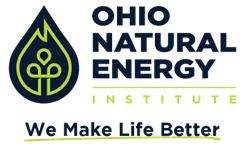
ONEi manages a “Petroleum Professionals in the Classroom Program” — Petro Pros — designed for elementary to middle school students. Forty-five minute presentations address the basics of fossil fuel exploration and production. A presentation kit is provided to each volunteer Petro Pro with training video available to assist the presenter.
Rebranded in 2023, ONEi began in 1997 as the Ohio Oil and Gas Energy Education Program (OOGEEP), a nonprofit organization funded by the state’s petroleum producers and royalty owners through a voluntary assessment on oil and natural gas produced in Ohio.
Environmental Education Council of Ohio
P.O. Box 1004
Lancaster, OH 43130
(740) 653-2649
Fax: (740) 653-6100
The Environmental Education Council of Ohio (EECO) is a nonprofit organization that provides environmental education to Ohio educators. EECO’s mission is to lead in facilitating environmental education that fosters stewardship and a sustainable future for all Ohioans. EECO, a membership based nonprofit established in 1967; has directors in 12 Ohio regions and offers workshops, conferences, a quarterly newsletter, green papers and other services to K-12 educators.
200 E. Wilson Bridge Rd.
Worthington, OH 43085
(614) 785-1717
A nonprofit energy education organization that promotes energy education and facilitates youth leadership through partnerships with schools, businesses, government, and communities, the Ohio Energy Project. OEP facilitates workshops for elementary and middle school students led by high school student teams. Workshops focus on current, interdisciplinary, and unbiased energy information.
Other workshop opportunities include: teacher professional development workshops with four-day “Energy Sources Tours” of Ohio’s energy sites; customized energy education programs, and new activities covering fuel cells and solar and nuclear energy. An affiliate of the National Energy Education Development (NEED) project, OEP offers a free partnership for Ohio educators.
Southeastern Ohio Oil & Gas Association
P.O. Box 136
Reno, OH 45773
(740) 374-2303
The Southeastern Ohio Oil and Gas Association (SOOGA) is a non-profit organization of local producers and businesses involved in the oil and gas industry. Established in 1978 by producers, SOOGA established a voice to address issues and concerns unique to the geographic area of the Mid-Ohio River Valley.
OKLAHOMA
Curious onlookers in Bartlesville gathered at the Nellie Johnstone No. 1 well on April 15, 1898. At 3 p.m., George Keeler’s stepdaughter, Miss Jenni Cass, dropped a “go devil” down the well bore to set off the waiting nitroglycerin – producing a gusher that marked the beginning of Oklahoma’s oil era.
Sarkeys Energy Center, room N-131
100 E. Boyd Street
Norman, Oklahoma 73019
Phone: (405) 325-3031
ogs@ou.edu
Located at the University of Oklahoma’s Mewbourne College of Earth and Energy, the Oklahoma Geological Survey (OGS) offers detailed studies of the state’s land, water, mineral and energy resources. Geologists study everything from Oklahoma earthquakes to educating K-12 students via outreach programs.
Oklahoma Energy Resources Board
Oklahoma Energy Resources Board
500 N.E. 4th St., Suite 100
Oklahoma City, OK 73104
800-664-1301
 Leaders representing Oklahoma’s petroleum producers and royalty owners, working with the state legislature, formed the Oklahoma Energy Resources Board (OERB) in 1993. The OERB has cleaned more than 13,000 orphaned or abandoned well sites through its well site restoration program, at no cost to landowners.
Leaders representing Oklahoma’s petroleum producers and royalty owners, working with the state legislature, formed the Oklahoma Energy Resources Board (OERB) in 1993. The OERB has cleaned more than 13,000 orphaned or abandoned well sites through its well site restoration program, at no cost to landowners.
The OERB also conducts public education campaigns to inform the public about the importance and economic impact of the oil and natural gas industry to the state of Oklahoma. Public education campaigns are focused on topics such as energy independence, careers, environmental stewardship and education.
 The OERB provides K-12 curricula developed by Oklahoma’s oil and natural gas professionals and leading educators. These programs are free to teachers and are offered at workshops throughout the state. There are eight programs offered for K-12 grade students: Little Bits for early elementary, Fossils to Fuel, and Fossils to Fuel 2 for elementary levels, Petro Active for middle school levels, and CORE Energy Science, CORE Energy Math, CORE Energy Social Studies and CORE Energy Language Arts for high school levels.
The OERB provides K-12 curricula developed by Oklahoma’s oil and natural gas professionals and leading educators. These programs are free to teachers and are offered at workshops throughout the state. There are eight programs offered for K-12 grade students: Little Bits for early elementary, Fossils to Fuel, and Fossils to Fuel 2 for elementary levels, Petro Active for middle school levels, and CORE Energy Science, CORE Energy Math, CORE Energy Social Studies and CORE Energy Language Arts for high school levels.
Well site safety is also a priority for the OERB, using the DUH campaign for K-6 grade students and the LUCKY campaign for middle and high school students, students learn about safety through advertisements, DVDs, folders and posters.
 The energy-related curricula and safety messages have been shared with more than 1.7 million Oklahoma students in 95 percent of school districts.
The energy-related curricula and safety messages have been shared with more than 1.7 million Oklahoma students in 95 percent of school districts.
The OERB recently launched OERBHomeRoom.com, which is the digital hub for all student education efforts. This site has been designed to give OERB-trained teachers easier access to helpful resources. These resources include video labs, virtual field trips, curriculum materials, white board lessons, industry information and much more.
The OERB also offers a scholarship program for students majoring in petroleum-related fields and a technical training program to receive a certification for a land, geological or engineering tech.
Mid-Continent Oil & Gas Association of Oklahoma
6701 N. Broadway, Suite 300
Oklahoma City, Oklahoma 73116
(405) 843-5741
Formed in 1917, the Mid-Continent Oil & Gas Association of Oklahoma is a nonprofit association of oil and gas producers, operators, purchasers, pipelines, transporters, processors and service companies, which represent a substantial sector of the oil and gas industry within Oklahoma. In 1963 the Oklahoma Petroleum Council, later to be merged into the Mid-Continent Oil & Gas Association, and the Oklahoma Historical Society began a cooperative program to mark some of the significant sites and events in the history of the petroleum industry in Oklahoma. The effort is coordinated by a Historical Committee, which works with the historical society on research, site selection and dedication plans. “Few other states have such a systematic method of telling the story, by means of historical monuments, of the significant role played by oil and gas. It is the oldest petroleum association in the United States.”
Petroleum Alliance of Oklahoma
500 N.E. 4th St., Suite 200
Oklahoma City, OK 73104
405-492-2334
The Petroleum Alliance off Oklahoma is an oil and natural gas trade association created by the merger of the Oklahoma Independent Petroleum Association and the Oklahoma Oil & Gas Association. It is the state’s largest oil and gas association, representing more than companies in the exploration and production industry or affiliated businesses. Drilling contractors, service and supply company owners and managers, and royalty owners comprise a percentage of Alliance membership. Other members are attorneys, accountants, and other professionals in energy.
Sustaining Oklahoma’s Energy Resources
500 N.E. 4th St., Suite 100
Oklahoma City, OK 73104
(405) 601-2190
 Sustaining Oklahoma’s Energy Resources (SOER) was previously known as the Marginal Well Commission. On July 1, 2013, Oklahoma Senate Bill 767 merged the Commission into the Oklahoma Energy Resources Board (OERB). The duties of the Commission on Marginally Producing Oil and Gas Wells were transferred to the Committee for SOER under the authority of OERB.
Sustaining Oklahoma’s Energy Resources (SOER) was previously known as the Marginal Well Commission. On July 1, 2013, Oklahoma Senate Bill 767 merged the Commission into the Oklahoma Energy Resources Board (OERB). The duties of the Commission on Marginally Producing Oil and Gas Wells were transferred to the Committee for SOER under the authority of OERB.
According to OERB, “It is SOER’s mission to encourage new processes or technological advancements to sustain the oil and natural gas industry in the future for the benefit of the citizens of Oklahoma and to advance activities to support marginally producing oil and natural gas wells. SOER offers a wide range of workshops and hosts events throughout the year to further this mission.”
Oil & Gas, Natural Resources, and Energy Center, OU College of Law
OU College of Law
300 Timberdell Road
Norman, OK 73019
(405) 325-4699
The Oklahoma University College of Law, “is a national and international leader in oil and gas, natural resources, and energy law – what we call ONE. Our expansive offerings are synthesized within our ONE Center, covering our academic degrees and certificates – J.D. certificates and an LL.M. in energy and natural resources, and an online M.L.S. in oil, gas, and energy law – and programming. OU Law hosts the annual Eugene Kuntz Conference on Natural Resources Law and Policy, the largest conference of its kind in the country, and is home to the Oil and Gas, Natural Resources, and Energy Journal (ONE J), the first journal of its kind. Students can also participate in the student association, ONE S – Oil and Gas, Natural Resources, and Energy Society.”
PENNSYLVANIA
In the “Valley that changed the world,” America’s petroleum industry began in Titusville when “Col.” Edwin Drake,” working for the Pennsylvania Rock Oil Co., struck oil at 69.5 feet on Aug. 27, 1859. Drake sold the oil to Samuel Kier for $20 per barrel. Kier used a small still in Pittsburgh to refine the oil into kerosene for illumination.
The Oil Region Alliance
217 Elm Street
Oil City, PA 16301-1412
(814) 677-3152
 Pennsylvania’s Oil Region is rich with petroleum history. In 2004, President George W. Bush signed HR 4818, which designated Pennsylvania’s Oil Region as the Oil Region National Heritage Area.This legislation established region as the nation’s 25th National Heritage Area.
Pennsylvania’s Oil Region is rich with petroleum history. In 2004, President George W. Bush signed HR 4818, which designated Pennsylvania’s Oil Region as the Oil Region National Heritage Area.This legislation established region as the nation’s 25th National Heritage Area.
The Oil Region Alliance is the lead economic, heritage, and tourism development group. Traveling upriver on the Allegheny by train or boat in the late nineteenth century, visitors would see Emlenton, Franklin and Oil City in Venango County, Tionesta in Forest County, pass by Tidioute and finally reach Warren in Warren County. All along the River, they would be treated to an array of particularly fine Victorian homes the region’s lumber — and America’s earliest oil industries — had built as personal monuments to success. You can make that same trip today and see many of those same Victorian homes. The Oil Region Alliance hosts historical workshops, field trips and special events.
Pennsylvania Independent Oil & Gas Association
 Northridge Office Plaza II
Northridge Office Plaza II
115 VIP Drive, Suite 210
Wexford, PA 15090
(724) 933-7306
The Pennsylvania Independent Oil and Gas Association is the principal nonprofit trade association representing Pennsylvania’s independent oil and natural gas producers, marketers, service companies and related businesses. PIOGA member companies drill and operate the majority of the state’s crude oil and natural gas, including the Marcellus Shale.
In April 2010, members of the Pennsylvania Oil and Gas Association (POGAM) and the Independent Oil and Gas Association of Pennsylvania (IOGA) unanimously voted to merge the two organizations into a single trade association. The merger reunited two organizations that had split apart some 30 years earlier. In fact, the roots of this organization date back to the founding of the Pennsylvania Oil, Gas and Minerals Association in 1918. POGAM was believed to be the oldest continuously operating oil and gas trade association in the United States.
List of colleges and universities in Pennsylvania – Wikipedia
For example, the University of Pittsburgh Library System’s digital collections contain more than 115,000 unique objects, including two million digital pages and images from special collecting units: the Archives & Special Collections and Center for American Music as well as several Pitt Faculty members and regional partner institutions. Finding aids the system’s archives and manuscript collections are also available.
Check it out with this 1923 publication, “A Series of Six Radio Talks on Oil and Gas,” by Roswell H. Johnson, that was “Radio Publication No. 19,” in the early years of the campus radio station established at the university, thanks to Westinghouse Electric & Manufacturing Company. The digitized text offers insights from Johnson, Head of the Department of Oil and Gas Production, School of Mines.
SOUTH DAKOTA
Shell Oil Co. drilled the discovery well for the Buffalo Field in October 1953 in Harding County. The well began producing at 9,332 feet on Jan. 14, 1954. Over the next 50 years, the well produced more than 341,000 barrels of oil.
South Dakota Petroleum & Propane Marketers Association
P.O. Box 1058
Pierre, SD 57501
(605) 224-8606
TENNESSEE
Between 1859 and 1870, several exploratory wells were drilled in Overton County. The Gilbreath No. 1 on Bear Creek came in at a depth of only 20 feet in 1860. In 1866, the Newman No. 1 well came in on Spring Creek and yielded about 2,000 barrels of oil from a depth of only 19 feet.
Tennessee Oil & Gas Association
750 Old Hickory Blvd., Suite 150-2
Brentwood, TN 37027
(615) 371-6137
Fax: (615) 599-1806

The Tennessee Oil & Gas Association (TOGA) is a non-profit organization of men and women involved in the exploration, development and production of crude oil and natural gas in Tennessee. TOGA meets four times a year and publishes a monthly newsletter.
TEXAS
Confederate veteran Lyne Taliaferro Barret’s Melrose Petroleum Oil Co. brought in the No.1 Isaac C. Skillern well near Nacogdoches on Sept. 12, 1866. The Lone Star state’s first commercial producer yielded a modest ten barrels per day.
The Briscoe Center for American History
2300 Red River St.
Sid Richardson Hall, Unit 2
Austin, Texas 78712-1426
“The Briscoe Center for American History is one of the nation’s leading research centers for historical study. The center’s archives, libraries, museums, and historic buildings are part of the The University of Texas at Austin’s commitment to collecting, preserving, and making available the evidence of the past. When the university opened in 1883, it began collecting materials documenting the history of Texas and the South.”
The Houston Geological Society
Houston Geological Society
14811 St. Marys Lane, Ste 250
Houston, TX 77079
713) 463-9476
Founded in 1923, the Houston Geological Society is a professional society for petroleum, energy and environmental geoscientists that supports continuing education, networking, outreach to students, student scholarships and young professional activities.
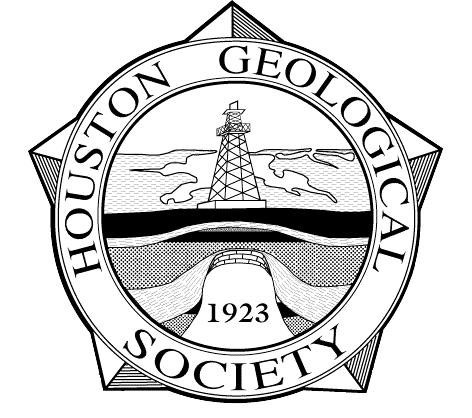 HGS energy education objectives are to stimulate interest and promote advancement in geology for the Houston area; to disseminate and facilitate discussion of geological information relationships among geologists in the area; and to aid and encourage academic training in the science of geology.
HGS energy education objectives are to stimulate interest and promote advancement in geology for the Houston area; to disseminate and facilitate discussion of geological information relationships among geologists in the area; and to aid and encourage academic training in the science of geology.
HGS hosts technical meetings, publishes of a monthly Bulletin, and organizes continuing education programs, field trips, the publication of timely books, and two student scholarship funds.
Oilfield Energy Center
200 North Dairy Ashford, Suite 6220
Houston, TX 77079
(281) 679-8040
A nonprofit corporation, the Oilfield Energy Center (OEC) is dedicated to expanding the awareness of the vast energy resources beneath the world’s oceans and to chronicling the unique heritage and technological accomplishments of the industry that discovers, produces, and delivers these resources in a safe and environmentally responsible way.
OEC operates the Ocean Star Offshore Drilling Rig & Museum at Pier 19 in Galveston. The museum is a retired jack-up rig that has been refurbished, enabling visitors to learn about operating offshore rigs and specialized oilfield equipment. Offers group package discounts and is available for rentals. The museum also offers “Family Days,” traveling Mobile Offshore Learning Units (MOLUs), and the Knowledge Box for showcasing the many aspects of the oil and gas industry. Each Knowledge Box contains teacher resources, hands-on activities, and interactive lessons.
Further, the OEC’s nonprofit Energy Education Foundation (EEF), “cultivates the next generation of energy professionals through education in the community, advocacy, and professional and technical engagement in the energy sector.”
Panhandle Producers & Royalty Owners’ Association
3131 Bell #209
Amarillo, TX 79106
(806) 352-5637
The Panhandle Producers & Royalty Owners’ Association (PPROA) is a trade association representing the oil and gas producers, service companies, and royalty owners in the Texas Panhandle, Eastern New Mexico, the Oklahoma Panhandle and Southwestern Kansas.
Permian Basin Petroleum Association
415 W. Wall, 1st floor
Midland, TX 79701
(432) 684-6345
Fax: (432) 684-7836
The Permian Basin Petroleum Association (PBPA) is a regional oil and gas trade association representing the Permian Basin industry, which produces 64 percent of Texas oil production and 20 percent of oil production in the lower 48 states.
PBPA is a regional trade association headquartered in Midland, Texas. A PBPA program, “Play it safe, don’t take chances,” is designed to make 4th – 7th grade students aware of the potential dangers of playing on oilfield equipment.
Railroad Commission of Texas
P.O. Box 12967
Austin, TX 78711-2967
(512) 463-7110
Fax: (512) 463-7292
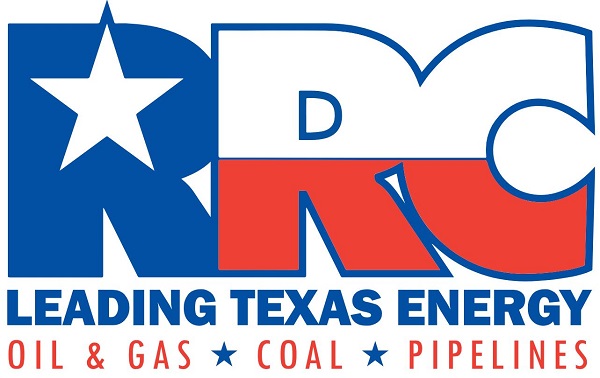
The Texas Railroad Commission (RRC) is a state energy agency that regulates the oil and gas, alternatives, and surface mining industries. The RRC provides educational materials free to Texas teachers, kindergarten through grade 10. Materials for primary grades are available on the website. These materials include interactive activities on energy and safety at home, at school, and outdoors. The commission also provides free educational workshops and a curriculum supplement called Alternative Energy for 6 through 10th grade science teachers in Texas.
Texas Alliance of Energy Producers
719 Scott Avenue, Ste. 930
Wichita Falls, TX 76301
(800) 299-2998 or (940) 723-4131
The Texas Alliance of Energy Producers was established in 2000 by the merger of two among the oldest oil and gas associations in the nation, the North Texas Oil & Gas Association and the West Central Texas Oil & Gas Association. With about 2,900 members, the Alliance is one of the largest oil and gas trade associations in the nation. The Alliance brings together members in 305 cities and 25 states for the common purpose of protecting the oil and gas industry. The Alliance has established a foundation to increase energy education throughout the state.
Texas General Land Office
1700 N. Congress Ave.
Austin, TX 78701
(512) 463-5001
The Texas General Land Office (GLO) offers extensive resources, including geographic information system (GIS) data and a land grant search with more than 688,000 records. Established in 1837, the Archives and Records preserve more than 35.5 million documents and 45,000 maps, dating back to the 16th century.
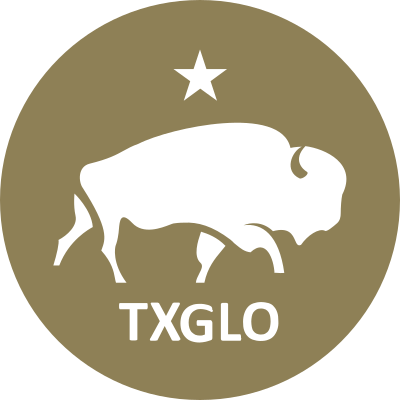
In 2014, GLO initiated “Texas Hidden History,” a collaborative team project between its Archives and Records and Geospatial Technology Services. The initiative in 2020 was expanded to use mapping software to produce a narrative called StoryMaps.
The oldest state agency in Texas, GLO works with museums, universities and other state agencies to provide Texas history resources for surveyors, genealogists, lawyers, historians, landmen, archeologists, educators, geographers, and industry experts. GLO oversees more than 13 million acres of land and mineral rights on behalf of the state’s permanent school fund. It also operates the Alamo.
Maguire Energy Institute
Cox School of Business Southern Methodist University
PO Box 750333
Dallas, Texas 75275-0333
(214) 768-2000
The Maguire Energy Institute, which encourages the study of management, marketing and policy issues related to the energy industry, sponsors programs that prepare students for careers in the energy industry.
The SMU institute, “provides focused research for direct business application and informs the public through independent, unbiased information. The Institute conducts seminars, lectures, forums, field trips and other programs designed to explore the many issues surrounding the energy industry. Most recently, the Institute worked with the Finance Department in the Cox School to create the new Energy Finance concentration in the MBA program.”
Texas Independent Producers and Royalty Owners
919 Congress Avenue- Suite 1000
Austin, TX 78701
(512) 477-4452
Founded in 1946 by Texas wildcatters, TIPRO has grown into the largest statewide association of its kind in the nation with more than 2,400 members. Throughout the calendar year, TIPRO has two large meetings. One is the Annual Convention and the second meeting, the Summer Policy meeting. Both meetings allow members to network and make association decisions.
Texas Oil & Gas Association
304 West Thirteenth Street
Austin, Texas 78701
(512) 478-6631
Fax: (512) 472-3859
The Texas Oil & Gas Association (TXOGA), founded in 1919, it is the oldest and largest organization in the state representing petroleum interests and continues to serve as the only organization in the state, which embraces all segments of the industry. In 1997, the Texas Mid-Continent Oil & Gas Association changed its name to the Texas Oil & Gas Association, thereby signifying a new era for the organization.
UTAH
In 1907, Pat Holohan found oil sands in Washington County and a dozen companies rushed in to drill 14 more. The next year, L.L. Goodridge completed a prolific oil well at Mexican Hat in San Juan County.
Utah Petroleum Association
275 East South Temple, Suite 150
Salt Lake City, Utah 84111
(801) 364-1510
![]() The Utah Petroleum Association is a voluntary, nonprofit trade association representing companies involved in all aspects of Utah’s oil and natural gas industry. “UPA speaks for the petroleum industry professionals in Utah on issues important to their business. Members seek to inform policymakers and the public how the industry helps improve lives, strengthen the economy, protect the environment and promote national security.”
The Utah Petroleum Association is a voluntary, nonprofit trade association representing companies involved in all aspects of Utah’s oil and natural gas industry. “UPA speaks for the petroleum industry professionals in Utah on issues important to their business. Members seek to inform policymakers and the public how the industry helps improve lives, strengthen the economy, protect the environment and promote national security.”
VIRGINIA
Reporting in 1833 on the Ruffner brothers wells northwestern Virginia (now West Virginia), the American Journal of Science noted, “The petroleum affords considerable profit and is beginning to be in demand for workshops and manufactories. It affords a clear, brisk light, when burned in this way, and will be a valuable article for lighting the street lamps in the future.” Today, Virginia’s production comes from the southwestern tip of the state.
Virginia Oil & Gas Association
P.O. Box 2285
Abingdon, VA 24212
West Virginia
On May 9, 1863, Confederate cavalry Gen. William “Grumble” Jones and 1,300 troops attack an early oil town near Parkersburg in what is now West Virginia. His troopers destroyed equipment and thousands of barrels of oil. Of his raid on Burning Springs, Virginia, Jones reports to Gen. Robert E. Lee: “The wells are owned mainly by Southern men, now driven from their homes, and their property appropriated either by the Federal Government or Northern men. All the oil, the tanks, barrels, engines for pumping, engine-houses, and wagons — in a word, everything used for raising, holding, or sending it off was burned.”
Independent Oil & Gas Association of West Virginia
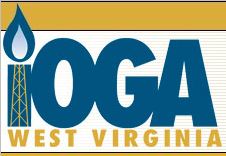 405 Capitol Street, Suite 808
405 Capitol Street, Suite 808
Charleston, WV 25301
(304) 344-9867
Fax: (304) 344-5836
Formed in 1959, The Independent Oil & Gas Association of West Virginia (IOGAWV) is a trade association representing companies engaged in all facets of the oil and natural gas industry in West Virginia. Its primary focus is to promote and protect a strong, competitive oil and gas producing industry. IOGAWV formed the West Virginia Education Alliance in 2006.
West Virginia Oil and Natural Gas Association
P.O. Box 3231
Charleston, WV 25332
(304) 343-1609
fax: (304) 343-5610
Chartered in 1915, WVONGA is the only trade association in West Virginia that serves the entire oil and natural gas industry, including exploration, production, transmission, storage, sales and distribution. It is involved in economic, environmental, legal and regulatory issues. WVONGA has developed an energy education program that includes a lesson plan for 8th grade social studies.
WYOMING
In 1832, Captain B. L. E. Bonneville took the first wagons through South Pass and recorded the presence of oil. Fifty years later, prospector Mike Murphy, bought an oil lease on the site of Capt. Bonneville’s “great tar spring” southeast of Lander.
American Heritage Center – University of Wyoming
Centennial Complex
2111 Willet Drive
Laramie, WY 82071
Phone: (307) 766-4114
Email: ahcref@uwyo.edu
The American Heritage Center (AHC) is a University of Wyoming repository of manuscripts, rare books, and university archives. The Center’s extensive collection began more than a century ago — thanks to faculty member Grace Raymond Hebard. “Officially established in 1945, the Center now holds over 90,000 cubic feet of historic documents and artifacts in more than 3500 collections — placing the AHC among the largest non-governmental archives in the nation,” notes the AHC website.

The Center, which is digitizing its holdings, allows remote access to collection material for educational and research purposes. The University Archives and Records Management Program (UWArchives@uwyo.edu) is a repository for University of Wyoming records, faculty papers, and records of student organizations.
“The AHC’s collections touch on a wide range of subjects, including Wyoming and the American West, the mining and petroleum industries, environment and natural resources, journalism, military history, transportation, the history of books, and 20th century entertainment such as popular music, radio, television, and film.”
Petroleum Association of Wyoming
951 Werner Court, Suite 100
Casper, WY 82601
(307) 234-5333
 This is Wyoming’s largest and oldest petroleum industry trade association, dedicated to the betterment of the state’s oil and gas industry and public welfare. PAW members account for approximately 90 percent of the natural gas and two-thirds of the crude oil produced in Wyoming.
This is Wyoming’s largest and oldest petroleum industry trade association, dedicated to the betterment of the state’s oil and gas industry and public welfare. PAW members account for approximately 90 percent of the natural gas and two-thirds of the crude oil produced in Wyoming.
Wyoming Independent Producers Association
P.O. Box 2325
Gillettte, WY 82717-2325
(307) 686-1081
WIPA is a nonprofit trade association representing the interests of oil and natural gas producers and service vendors doing business within the state.
_______________________________
The American Oil & Gas Historical Society (AOGHS) preserves U.S. petroleum history. Become an AOGHS supporting member and help maintain this energy education website and expand historical research. For more information, contact bawells@aoghs.org. © 2024 Bruce A. Wells.


